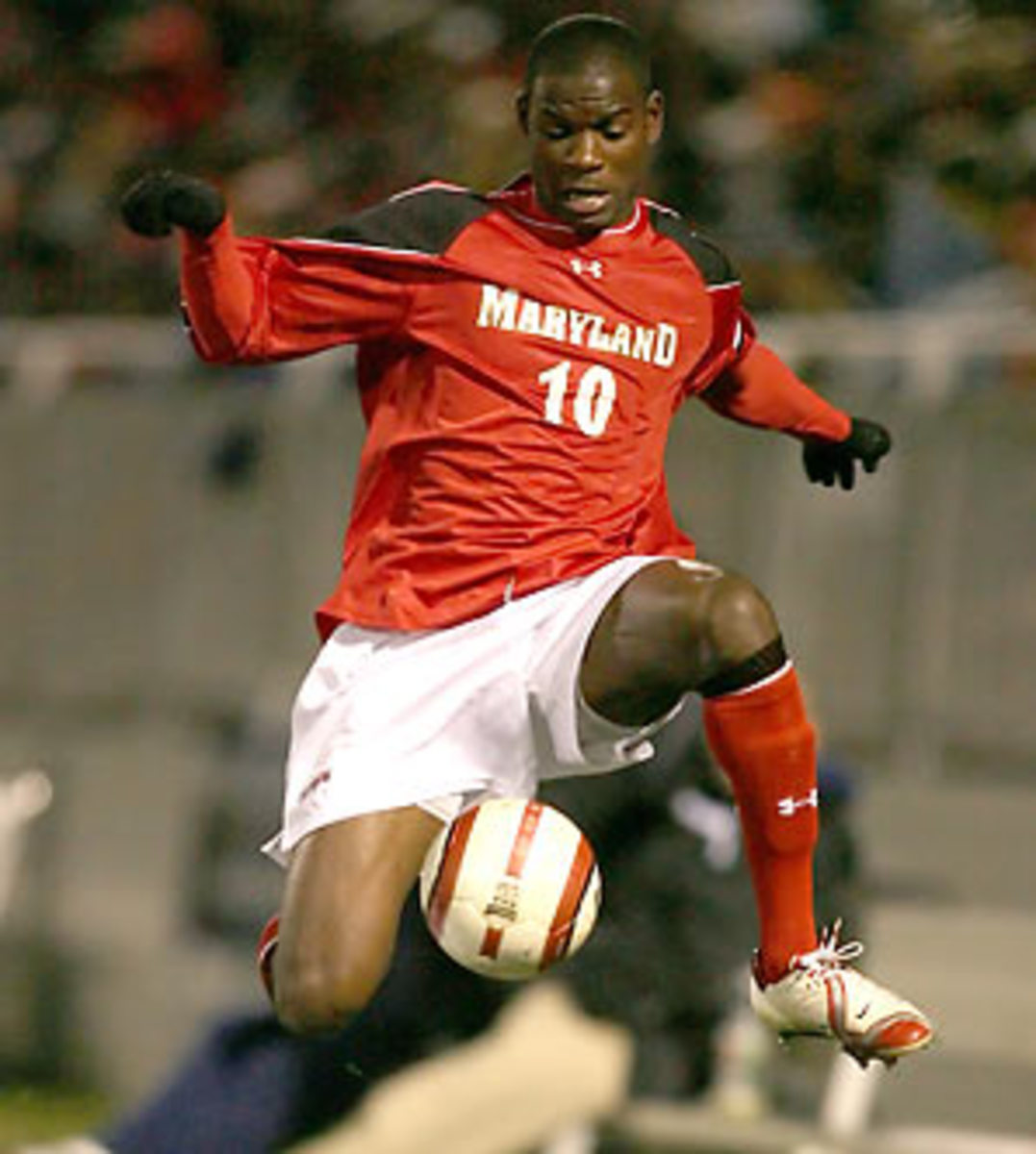MLS' college policies need overhaul
With the college season concluded and the MLS Combine and 2009 SuperDraft just a few weeks away, the time is ripe for the league to revise its policies regarding college players.
But it won't. A league that has coupled its SuperDraft with the National Soccer Coaches Association of America (NSCAA) Convention to rake in a decent crowd for the proceedings has systemically and shamelessly hacked away at the college game.
A player who leaves college early can sign a Generation Adidas contract, which comes with a nice bonus, and receive roster protection. A four-year player only gets a decent contract offer if he's picked in the first round; otherwise, he gets the minimum or a developmental deal.
Some pretty good college players opt for Europe not because they have grandiose dreams, but they see a way to earn a decent wage playing soccer rather than living with their parents or sleeping on somebody's couch.
Since the draft is held in January during the European secondary transfer window, if an MLS team wants an elite player who might be thinking about Europe, it must take him in the first round to have any chance of a competitive contract offer. Many players will opt for Europe anyway, but not all of them will.
The smart thing to do is to wait and take him later so as not to possibly waste a first-round pick on a player headed to Europe. But if a team does that, MLS policy usually dictates he'll get the minimum salary, if that. Case in point: GregDalby, taken by the Colorado Rapids in the second round of the 2007 SuperDraft, went overseas, didn't cut it and haggled for months before accepting a deal from MLS for $33,000 rather than the $55,000 he asked for.
This also fits perfectly with the league's stance of punishing any drafted player who does find a spot in Europe and eventually decides to return. But it worked great in the case of Taylor Twellman, scorer of 23 goals as a $24,000 player in '02, didn't it?
Former Columbus Crew coach Sigi Schmid has a suggestion: Grant every player taken in the first round roster protection, whether he's a GA player or not. "That's something that has been brought up, for sure, and something I've brought up as well, and been discussed," says Schmid, who in the past month has won the Coach of the Year Award, brought the Crew its first MLS Cup and triggered a contentious move to the Seattle Sounders that resulted in the expansion team surrendering allocation money and paying a fine to get him.
"We shouldn't necessarily punish a guy who's a 21-year-old senior and reward a 21-year-old junior who comes out early and is Generation Adidas. So then teams look at the players and think, 'Do we take this 17-year-old because he's protected, or do we draft this 21-year-old who we think can help us?' You'll get a truer reflection of a player's value in the first round, and beyond the first round, Generation Adidas guys are still protected and still have their premium."
MLS isn't in the business of sustaining college soccer, of course. It's making a pretty good go of succeeding as a business where so many leagues and projects have failed miserably. As the league expands, there are more first-round draft slots, but the field is tilted so heavily in favor of Generation Adidas players that too many capable four-year players get caught in the squeeze.
In collective bargaining agreement negotiations to commence next year, the MLS Players' Union will have many issues to address. But one item that should be on the agenda is the stringent salary restrictions on college players taken after the first round. By whatever bizarre formula the league is putting "some" money saved by elimination of the reserve league "back into" the salary cap, that money can go to good college players who deserve more than a "take it or leave it" deal at the minimum salary.
The cessation of the reserve league and elimination of four developmental slots may, in the long run, actually accelerate the development of some players by taking them off the fringes of MLS rosters and force them overseas or to the USL. Ergo, they will either sink or swim, not float along aimlessly. And those that do get on a roster deserve a decent salary.
Schmid and others would also like to see a return of a summer showcase for college players, by which they train with MLS teams for two or three months and compete against each other in matches. San Jose Earthquakes general manager John Doyle believes both teams and players would benefit from training and observation as a de facto reserve team without any contractual obligations to MLS.
"We're right at Santa Clara," says Doyle of Buck Shaw Stadium and the training facilities the Quakes utilize at the university. "They're off a little this year, but traditionally they're a very good program. With USF, Stanford, Cal-Berkeley, San Jose State -- I know I'll leave somebody out and get in trouble -- and UC Davis has a good program this year, if we got to keep all those kids in a 100-mile radius that no one else could take, that would be a pretty good reserve team. And a lot of them come from Northern California, so they've gone through the youth clubs that we know."
The hangups, of course, would be NCAA restrictions. Yet college players in basketball and other sports are permitted to practice and play in similar environments. Hammering out the details would be difficult but not impossible.
And local players -- from colleges, high schools, clubs, whatever -- have been training with MLS teams, unofficially of course, since the league started and no comets have crashed into the earth as a consequence. At least, not yet.






